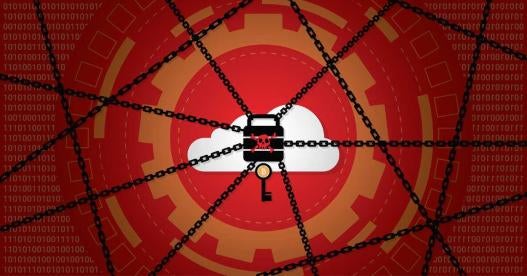The cyberthreat landscape is evolving as threat actors develop new tactics to keep up with increasingly sophisticated corporate IT environments. In particular, threat actors are increasingly exploiting supply chain vulnerabilities to reach downstream targets.
The effects of supply chain cyberattacks are far-reaching, and can affect downstream organizations. The effects can also last long after the attack was first deployed. According to an Identity Theft Resource Center report, “more than 10 million people were impacted by supply chain attacks targeting 1,743 entities that had access to multiple organizations’ data” in 2022. Based upon an IBM analysis, the cost of a data breach averaged $4.45 million in 2023.
What is a supply chain cyberattack?
Supply chain cyberattacks are a type of cyberattack in which a threat actor targets a business offering third-party services to other companies. The threat actor will then leverage its access to the target to reach and cause damage to the business’s customers. Supply chain cyberattacks may be perpetrated in different ways.
- Software-Enabled Attack: This occurs when a threat actor uses an existing software vulnerability to compromise the systems and data of organizations running the software containing the vulnerability. For example, Apache Log4j is an open source code used by developers in software to add a function for maintaining records of system activity. In November 2021, there were public reports of a Log4j remote execution code vulnerability that allowed threat actors to infiltrate target software running on outdated Log4j code versions. As a result, threat actors gained access to the systems, networks, and data of many organizations in the public and private sectors that used software containing the vulnerable Log4j version. Although security upgrades (i.e., patches) have since been issued to address the Log4j vulnerability, many software and apps are still running with outdated (i.e., unpatched) versions of Log4j.
- Software Supply Chain Attack: This is the most common type of supply chain cyberattack, and occurs when a threat actor infiltrates and compromises software with malicious code either before the software is provided to consumers or by deploying malicious software updates masquerading as legitimate patches. All users of the compromised software are affected by this type of attack. For example, Blackbaud, Inc., a software company providing cloud hosting services to for-profit and non-profit entities across multiple industries, was ground zero for a software supply chain cyberattack after a threat actor deployed ransomware in its systems that had downstream effects on Blackbaud’s customers, including 45,000 companies. Similarly in May 2023, Progress Software’s MOVEit file-transfer tool was targeted with a ransomware attack, which allowed threat actors to steal data from customers that used the MOVEit app, including government agencies and businesses worldwide.
Legal and Regulatory Risks
Cyberattacks can often expose personal data to unauthorized access and acquisition by a threat actor. When this occurs, companies’ notification obligations under the data breach laws of jurisdictions in which affected individuals reside are triggered. In general, data breach laws require affected companies to submit notice of the incident to affected individuals and, depending on the facts of the incident and the number of such individuals, also to regulators, the media, and consumer reporting agencies. Companies may also have an obligation to notify their customers, vendors, and other business partners based on their contracts with these parties. These reporting requirements increase the likelihood of follow-up inquiries, and in some cases, investigations by regulators. Reporting a data breach also increases a company’s risk of being targeted with private lawsuits, including class actions and lawsuits initiated by business customers, in which plaintiffs may seek different types of relief including injunctive relief, monetary damages, and civil penalties.
The legal and regulatory risks in the aftermath of a cyberattack can persist long after a company has addressed the immediate issues that caused the incident initially. For example, in the aftermath of the cyberattack, Blackbaud was investigated by multiple government authorities and targeted with private lawsuits. While the private suits remain ongoing, Blackbaud settled with state regulators ($49,500,000), the U.S. Federal Trade Commission, and the U.S. Securities Exchange Commission (SEC) ($3,000,000) in 2023 and 2024, almost four years after it first experienced the cyberattack. Other companies that experienced high-profile cyberattacks have also been targeted with securities class action lawsuits by shareholders, and in at least one instance, regulators have named a company’s Chief Information Security Officer in an enforcement action, underscoring the professional risks cyberattacks pose to corporate security leaders.
What Steps Can Companies Take to Mitigate Risk?
First, threat actors will continue to refine their tactics and techniques. Thus, all organizations must adapt and stay current with all regulations and legislation surrounding cybersecurity. Cybersecurity and Infrastructure Security Agency (CISA) urges developer education for creating secure code and verifying third-party components.
Second, stay proactive. Organizations must re-examine not only their own security practices but also those of their vendors and third-party suppliers. If third and fourth parties have access to an organization’s data, it is imperative to ensure that those parties have good data protection practices.
Third, companies should adopt guidelines for suppliers around data and cybersecurity at the outset of a relationship since it may be difficult to get suppliers to adhere to policies after the contract has been signed. For example, some entities have detailed processes requiring suppliers to inform of attacks and conduct impact assessments after the fact. In addition, some entities expect suppliers to follow specific sequences of steps after a cyberattack. At the same time, some entities may also apply the same threat intelligence that it uses for its own defense to its critical suppliers, and may require suppliers to implement proactive security controls, such as incident response plans, ahead of an attack.
Finally, all companies should strive to minimize threats to their software supply by establishing strong security strategies at the ground level.







 i
i


